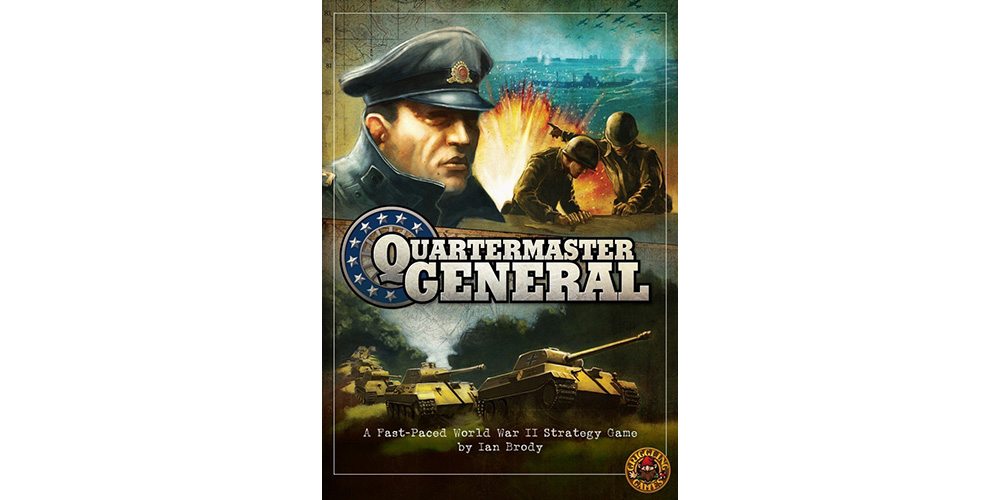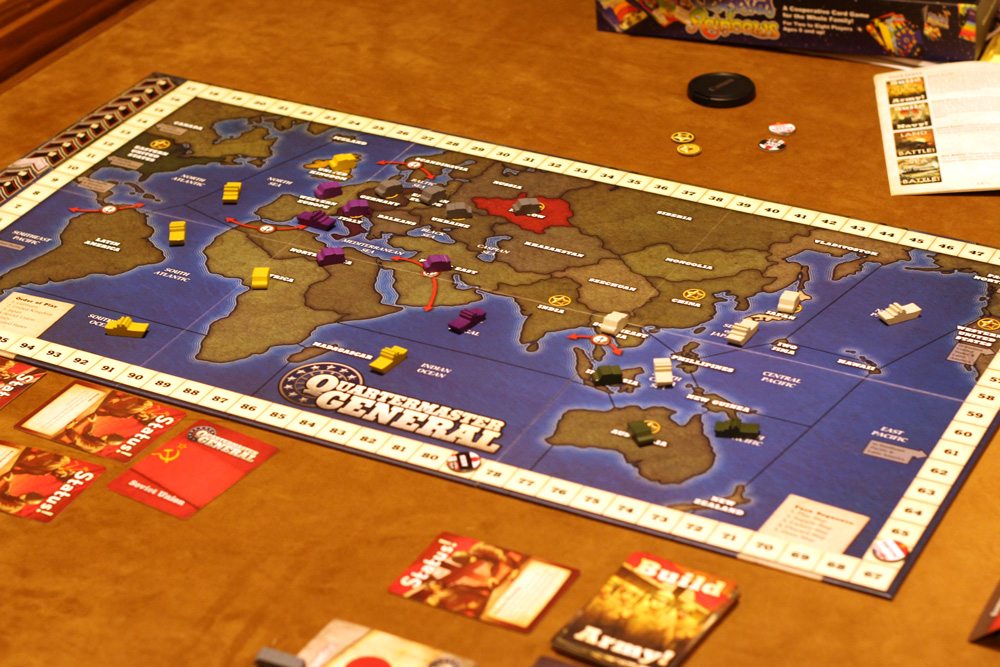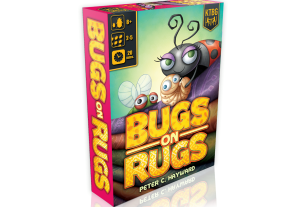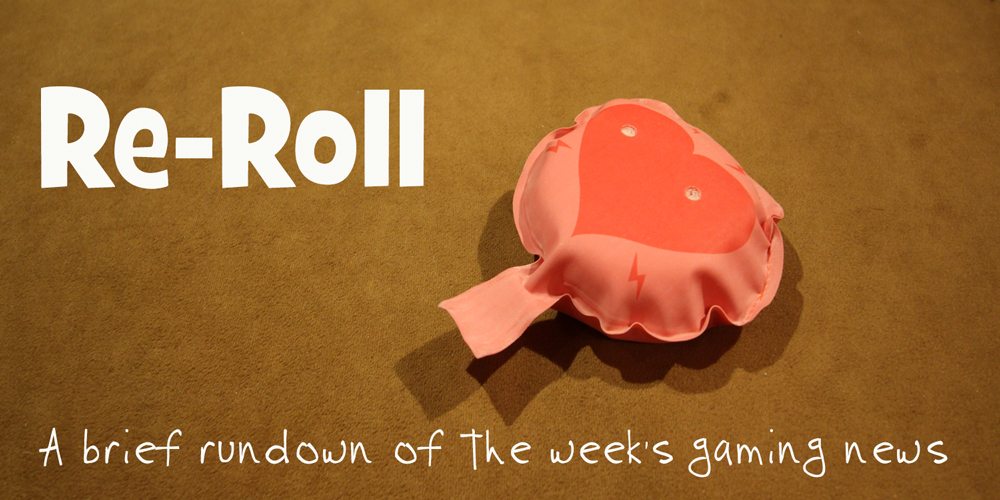You’ve played war games where you control the Axis. You’ve played games where you control the Allies. You’ve played games that replicate the Revolutionary War, Civil War, and dozens of skirmishes and battles before, between, and beyond. You’ve played as Roman soldiers, alien invaders, vikings, and samurai. But have you ever played as a quartermaster?
A new game from Griggling Games, Quartermaster General, puts you in charge of supply chains for the major nations involved in WW2 in a very fast-paced and surprisingly fun adventure. This 2-6 player game for ages 12 and older pits the Axis against Allied nations in an assault to keep troops supplied during the the second World War.
Summary
Players take sides to play either as the Axis or the Allies — Germany, Italy, and Japan against the United Kingdom, the Soviet Union, and the United States — in this game of area control. While discussion isn’t allowed among players on the same side, intent is pretty quickly apparent so assisting others on your team is pretty easy. Armies and navies need supplies to keep them fighting far from home and a continuous chain is your goal to spread your influence and defeat the enemy by disrupting his supply chain or taking over his supply centers.
Components
First things first, this game is flat-out gorgeous, really standing out among war games. Each nation has a deck of cards and supply of army and navy tokens. No two nations are the same, so decks are of varying sizes and makeup. The board and the cards are beautifully illustrated and a joy to look at. The wooden ship and tank tokens that represent armies and navies are OK, but a little overshadowed by the rest of the high quality components of the game. (More detailed, plastic tokens would have really gone much better with the amazing board and cards.) The board, box, and cards are all very high quality and feel good in the hands. The instruction manual also looks great and lays out the game logically, making setup and learning the game pretty simple. All in all, the game is very impressive upon first unboxing.
How to Play
After picking sides and assigning an army to each nation’s home supply depot, players deal out 10 cards from the deck of each nation they control and review the cards. Players must discard three cards from each nation’s hand to get to a hand of seven cards. In Quartermaster General, once cards are discarded, they are not seen in that game again. Each nation’s deck is different, making it imperative for a player to really consider what cards to hold on to, play, and discard. A quartermaster’s job is to manage his nation’s resources — in this game, a nation’s resources are its cards.
Play proceeds each round according to a set order that’s printed on the board. Axis and Allies take turns nipping at each other and expanding territory. Each turn, a nation must play a card. Cards fall into one of several types. Build Army and Build Navy cards allow nations to place a wooden tank or ship in a space adjacent to existing territories where supply has been established. (Or start again in a home space if the original army has been defeated.) There are some rules controlling where armies and navies can be placed, but it essentially boils down to one army or navy per territory and new armies and navies must maintain supply to a supply spaces (depots).
Land and Sea Battle cards allow you to attack an adjacent enemy army or navy and remove it from the board. Event cards are one-time use cards that are immediately resolved and Economic Warfare cards are also one-time use. They generally cause an opponent to lose cards from his hand or victory points from his side’s total. This can be painful, as the draw pile of each nation is finite. Status cards provide ongoing effects and are placed face-up in front of that nation’s player, while Response cards provide one-time effects and are placed face-down in front of that nation’s player, held ready to provide riposte against an enemy’s aggression.
After playing a card, a player then checks to make sure all of his armies and navies are in supply, maintaining an unbroken chain to a supply space, and removes any tokens that have been cut off from the supply chain. Victory points are counted each turn, awarding 2 points for each supply space that nation occupies (or 1 point if multiple armies share the space), plus any bonuses that Status cards award. The player then discards as many cards from his hand as he wants and draws back up to the hand limit of seven. Play continues until one of three victory conditions is presented: the game completes its 20th round, one side reaches 400 points, or the Axis or Allies occupy two of its enemies’ home spaces.
Play is straight-forward and simple and, as long as analysis paralysis doesn’t overcome players (a real possibility given the available options) games can be played in just under an hour. If your play is more methodical, game times can be doubled.

Verdict
I mostly liked Quartermaster General. It is one of the fastest playing war games I’ve ever experienced and the tide of war can dramatically change in just a round or two. Plus, the game is nice to look at, which makes the experience more enjoyable. However, it’s not without frustrations.
On more than one occasion, countries, thanks to the shuffle of the deck, one of us wasn’t able to draw any Build Army or Navy cards until very late in the game, rendering powerful nations ineffective. There’s nothing like the desperation of playing a game and not being able to do anything. To work around this problem, I plan on trying out a number of house rules where Build Army or Build Navy cards are shuffled higher into the deck or included in the starting hand.
What’s more, the game feels more weighted toward the Allies, so if you are playing a six-player game as one of the nations with fewer things to do (like Japan), your impact can be less noticeable, depending on your strategy. This can be overcome by playing as a two-player game and I think the game shines most brightly in this configuration. We had a lot more fun when playing as a two-player game than when playing with a full complement of six players. With two players, there is always something to do, even if you’re controlling a no-army-drawing, landlocked Soviet Union.
The game becomes complicated with lots of Status cards played before you and you have to really be sharp to make sure you don’t ignore any benefits that you are due. When we first started playing, we felt like the playing of a battle card that removed an army or navy was too simple. Everything we had ever been taught about a war game made us want to roll dice to determine the outcome. But remembering those losses were driven by the disruption of supply made the removal of those tokens easier.
Quartermaster General is a pretty unique theme and a great take on the war game. Still, I wanted more of the theme. The flavor text, while innovative, seemed too high level, making it feel more like a regular war game. I wanted references to supply that affected individual units. I wanted parachute drops to resupply a cut off army. I wanted starving troops and an underground resistance that came to their aid. Maybe in an expansion, hopefully?
Overall, we enjoyed Quartermaster General as a fast playing war game that presents players with lots of ways to win. By slow expansion to key territories, players can grind out points toward victory. Or players can move aggressively to cut enemy supply chains and conquer their supply spaces. Or, by controlling three nations, a player can choose a variety of these strategies, providing plenty of ways to play the game and lots of replayability.
Quartermaster General is available now.
Disclosure: GeekDad was sent a review sample of this game.







